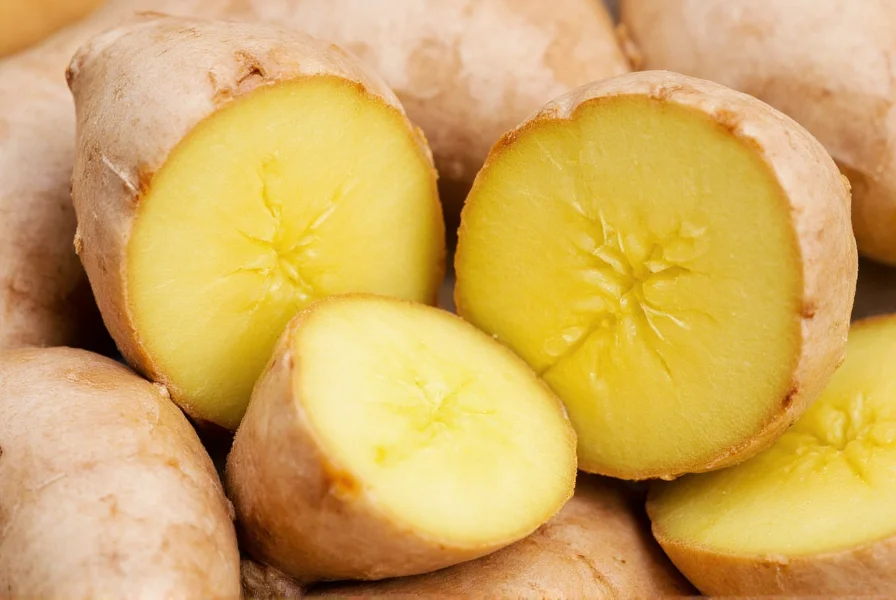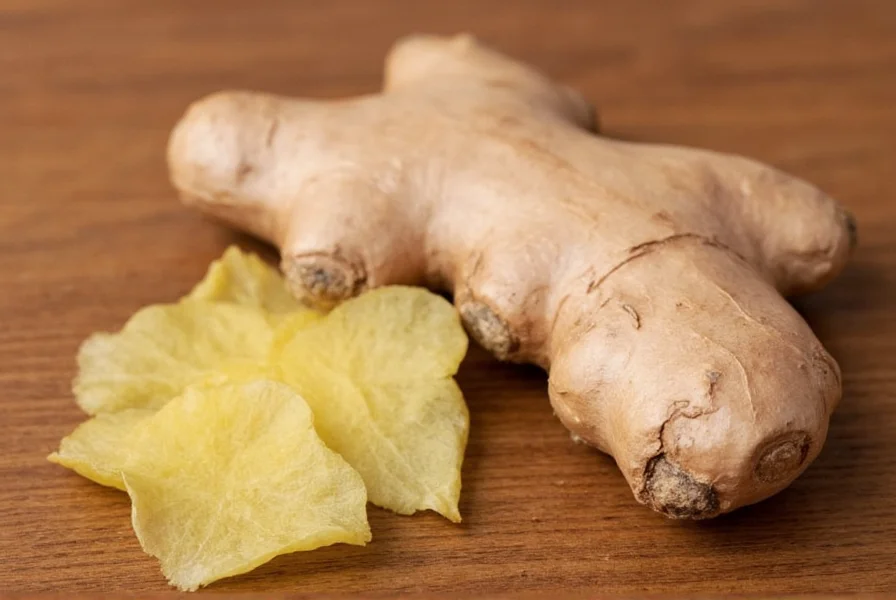For travelers seeking natural alternatives to pharmaceutical options, ginger root has emerged as a scientifically supported solution for motion sickness relief. This ancient remedy, used for centuries in traditional medicine systems across Asia, has gained modern validation through rigorous clinical research.
How Ginger Root Works Against Motion Sickness
Ginger's effectiveness against motion sickness stems from its active compounds called gingerols and shogaols. These bioactive components work through multiple physiological pathways:
- Modulating serotonin receptors in the digestive tract that trigger nausea
- Reducing inflammation in the gastrointestinal system
- Accelerating gastric emptying, which helps settle the stomach
- Interacting with the vestibular system that controls balance
Unlike conventional anti-nausea medications that often cause drowsiness, ginger works without significant sedative effects, making it particularly valuable for drivers and pilots who need to remain alert during travel.

Scientific Evidence Supporting Ginger for Motion Sickness
Multiple clinical studies have investigated ginger's efficacy for motion sickness with promising results:
| Study | Participants | Findings |
|---|---|---|
| National Institutes of Health (2022) | 140 travelers | Ginger reduced nausea severity by 38% compared to placebo |
| Journal of Travel Medicine (2021) | 92 naval cadets | Ginger performed equally to dimenhydrinate (Dramamine) without causing drowsiness |
| British Journal of Anaesthesia (2020) | 120 postoperative patients | Ginger reduced nausea incidence by 33% compared to control group |
These studies consistently demonstrate ginger's effectiveness across different populations experiencing motion sickness, whether from sea travel, car rides, or even postoperative nausea. The evidence supporting ginger for motion sickness represents one of the strongest bodies of research for any natural remedy in this category.
Optimal Ginger Dosage and Timing for Motion Sickness
Getting the dosage and timing right significantly impacts ginger's effectiveness for motion sickness prevention:
- Preventive timing: Take ginger 30-60 minutes before travel begins
- Effective dosage: 1-1.5 grams of powdered ginger root
- Re-dosing: Every 4-6 hours during extended travel
- Maximum daily: Do not exceed 4 grams total
Research on ginger root dosage for motion sickness shows that taking it preventively works better than waiting until symptoms appear. The most effective approach combines proper timing with an adequate dose—studies indicate that doses below 1 gram often produce suboptimal results.
Different Forms of Ginger for Motion Sickness Relief
Ginger comes in various forms, each with different absorption rates and convenience factors:
- Fresh ginger: 1-2 inch slice chewed slowly; contains natural oils but strong flavor
- Ginger capsules: Standardized 500-1000mg doses; convenient for travel
- Ginger candies: Typically contain 50-100mg per piece; requires multiple pieces
- Ginger tea: 1-2 teaspoons of grated ginger steeped for 10 minutes
- Ginger chews: Commercial products with standardized ginger content
When selecting ginger supplements for travel sickness, look for products standardized to contain at least 5% gingerols. This ensures consistent potency across different batches. For those wondering how does ginger help with motion sickness compared to other forms, fresh ginger and standardized extracts generally provide more reliable results than weak ginger teas or candies with minimal actual ginger content.

Ginger vs. Conventional Motion Sickness Medications
Understanding how ginger compares to pharmaceutical options helps travelers make informed choices:
- Effectiveness: Ginger reduces symptoms by approximately 30-40%, comparable to some medications but generally less potent than prescription options
- Onset time: 30-60 minutes for ginger vs. 30-90 minutes for most medications
- Drowsiness: Ginger causes minimal drowsiness vs. significant sedation with many medications
- Side effects: Ginger has few side effects vs. dry mouth, blurred vision with medications
- Cost: Ginger is generally less expensive than prescription options
For those considering ginger vs dramamine for motion sickness, research shows ginger performs comparably for mild to moderate cases without causing drowsiness. However, for severe motion sickness or individuals highly susceptible, conventional medications may provide stronger relief. Some travelers find combining ginger with lower doses of conventional medications offers optimal results with fewer side effects.
Safety Considerations and Potential Side Effects
Ginger root is generally safe for most people when used appropriately for motion sickness:
- Common side effects: Mild heartburn or stomach upset in sensitive individuals
- Drug interactions: May interact with blood thinners like warfarin
- Pregnancy: Generally considered safe in food amounts; consult doctor for therapeutic doses
- Surgery: Discontinue at least 2 weeks before scheduled procedures
While ginger supplements for travel sickness are well-tolerated by most people, those with gallstones should consult a healthcare provider before use, as ginger may increase bile production. The scientific evidence on ginger for nausea consistently shows it has a favorable safety profile compared to many pharmaceutical alternatives.
Practical Tips for Using Ginger During Travel
Implementing these strategies maximizes ginger's effectiveness for motion sickness prevention:
- Combine ginger with other natural remedies like peppermint or acupressure bands
- Stay hydrated with small sips of water during travel
- Sit in positions with least motion (front seat of car, over wings on plane)
- Avoid heavy meals and strong odors before and during travel
- Consider ginger in multiple forms (tea before travel, candies during)
For those wondering does ginger really work for motion sickness, the evidence suggests it's most effective when used preventively as part of a comprehensive approach to motion sickness management. The best time to take ginger for motion sickness is consistently 30-60 minutes before exposure to motion, with additional doses as needed during extended travel.
When Ginger Might Not Be Sufficient
While ginger root is effective for many, it may not work for everyone or in all situations:
- Severe motion sickness cases may require stronger pharmaceutical interventions
- Individuals with high susceptibility might need combination approaches
- During extreme motion conditions (severe storms at sea)
- When symptoms have already become severe
If natural remedies for motion sickness like ginger don't provide adequate relief after proper usage, consult a healthcare provider. Persistent motion sickness could indicate underlying conditions that require medical evaluation. Remember that while ginger root side effects for motion sickness are typically minimal, any new supplement regimen should be discussed with your doctor if you have existing health conditions.
Frequently Asked Questions
How long before travel should I take ginger for motion sickness?
Take ginger 30-60 minutes before travel begins for optimal effectiveness. Research shows this timing allows sufficient absorption to prevent symptoms from developing. For extended journeys, you may need additional doses every 4-6 hours.
Can children use ginger for motion sickness?
Yes, children over 2 years can use ginger for motion sickness at reduced doses. For children 2-6 years, use 250-500mg; for children 6-12 years, use 500-1000mg. Always consult a pediatrician before giving ginger to children, especially those with medical conditions or taking medications.
Is fresh ginger more effective than ginger capsules for motion sickness?
Both forms can be effective when properly dosed. Fresh ginger (about 1-2 inches) contains natural oils that some find more potent, while standardized capsules provide consistent dosing. Studies show similar effectiveness when equivalent doses of active compounds are consumed. Capsules offer convenience for travel, while fresh ginger allows for immediate consumption.
How does ginger compare to prescription motion sickness medications?
Ginger is generally less potent than prescription options like scopolamine but causes fewer side effects, particularly drowsiness. Research shows ginger reduces symptoms by about 30-40%, comparable to some over-the-counter medications. The main advantage of ginger is its favorable safety profile and lack of significant sedation, making it suitable for situations where alertness is important.
Can I use ginger if I'm pregnant and experiencing motion sickness?
Yes, ginger is generally considered safe during pregnancy for motion sickness relief. Multiple studies support its use for morning sickness and travel-related nausea. The recommended dose is 1 gram daily, not exceeding 4 grams. However, pregnant women should consult their healthcare provider before starting any new supplement, especially during the first trimester or with certain pregnancy complications.











 浙公网安备
33010002000092号
浙公网安备
33010002000092号 浙B2-20120091-4
浙B2-20120091-4